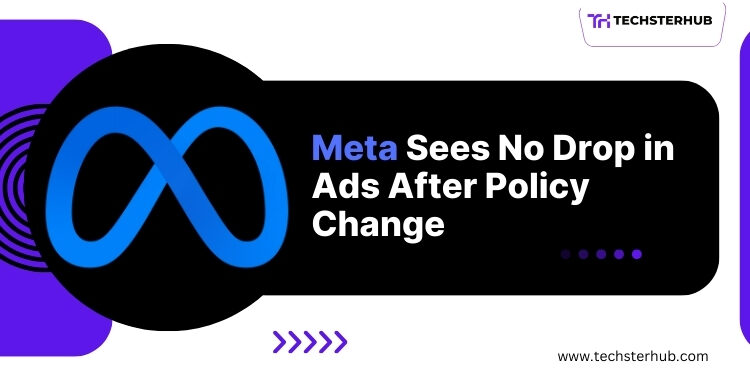The parent company of Facebook, Instagram, and WhatsApp known as Meta became prominent recently because of a notable change in its content policies. The organization revised its content guidelines to support more diversity and inclusivity which led to conversations within the advertising and technology industries. According to Meta there has been no significant effect on advertiser demand following their policy updates while they maintain that these revisions have not undermined their revenue generation.
Meta adjusted its content policy framework to maintain equilibrium between user safety and platform integrity while dealing with digital content evolution. The policy modifications seek to enhance user engagement by widening permissible content while placing greater attention on ad placement with content meeting safety and inclusivity standards.
What Is the Content Policy Shift?
The updated content policy from Meta aims to create an inclusive space for a wider array of voices and expanded expression freedom but maintains strict adherence to community guidelines. The policy changes affect the types of content permitted in advertisements together with alterations in how ads appear to users. The policy revisions increased attention towards mitigating harmful content such as misinformation and hate speech along with other damaging behaviors.
Some of the key changes included:
- Increased Inclusivity: The platform started accepting a greater array of advertisements which showcase diverse demographics along with multiple ideologies and perspectives.
- Updated Ad Guidelines: Meta revised its ad guidelines to better match its content standards so ads won’t appear alongside harmful or misleading content.
- Focus on User Control: Meta rolled out additional user controls which allow people to customize their ad preferences for enhanced personalization and improved safety.
Meta’s Reassurance to Advertisers
Advertisers expressed concerns about a potential drop in demand and dissatisfaction following the policy changes since some brands are hesitant to be linked to particular content types. Brand safety remains a top priority for advertisers who will change their decisions based on how ads are displayed next to content.
Meta acted swiftly to assure investors that its platform advertising space demand remained stable despite the recent policy changes. Meta confirmed during its most recent earnings report that advertiser demand volumes stayed stable without showing any “noticeable impact” after its policy changes were implemented. The company explained that it remained successful in retaining advertiser demand because of its enduring dedication to high-quality content along with advanced advertising solutions that connect businesses with large engaged user bases.
Why Are Advertisers Not Concerned?
There are several reasons why advertisers may not be significantly impacted by Meta’s policy shift, despite concerns that it could change how their ads are perceived or where they appear:
- Strong Audience Engagement: Meta’s platforms such as Facebook and Instagram maintain billions of active monthly users which keeps advertisers interested despite policy changes because they focus on reaching these large audiences instead of worrying about ad placement content.
- Ad Targeting Capabilities: The advanced ad targeting features from Meta remain one of its top selling points for advertisers who can target their audience precisely through user demographics, interests, behaviors and locations to avoid controversial content.
- Improved Content Moderation Tools: Meta has refined its content moderation processes to remove harmful or misleading content from ad placements which helps maintain brand safety and advertiser confidence due to concerns about reputational damage from problematic content.
- Evolving Policies with Industry Standards: Meta’s policy revisions align with digital advertising trends across the industry since platforms like Google and Twitter are similarly updating their content rules to balance inclusivity with brand safety.
Meta’s Ongoing Strategy to Ensure Ad Revenue
Meta has actively maintained its advertising business strength despite its new content policy changes. In addition to improving its ad targeting capabilities, Meta continues to focus on expanding its suite of advertising tools and services, such as:
- Shopping Features: Through its advanced shopping features Meta has successfully connected e-commerce with social media platforms to enable businesses to promote products via ads that direct users to complete purchases.
- Innovative Ad Formats: Meta keeps developing new ad formats including Instagram Story ads and Facebook Marketplace ads while introducing interactive options such as polls and quizzes to engage customers dynamically which helps keep their interest alive and boosts purchase likelihood.
- Advanced Analytics: Meta’s development of advanced analytics tools allows advertisers to assess campaign performance which leads to better decision-making and enhanced campaign efficiency.
The Future of Meta’s Advertising Business
Meta’s advertising business proves to be strong and adaptable because advertiser demand has remained stable after the implementation of new policies. Meta must stay alert and adaptive because the digital advertising environment keeps changing along with user expectations.
There are several areas where Meta’s advertising business could continue to grow, such as:
- Expanding in New Markets: Meta works to grow its reach in emerging markets which are experiencing increasing internet access as these locations offer advertisers the chance to connect with new audiences.
- Adapting to Privacy Changes: The rise of global privacy concerns and data protection regulations such as GDPR in Europe and Apple’s privacy updates will require Meta to continuously modify its advertising model for compliance and maintain effective targeting capabilities.
- Improving User Experience: The company Meta has declared its intention to build a platform that provides users with safety and value through ongoing refinement of content policies and enhanced user control options.
Conclusion
The latest changes in Meta’s content policies raised advertiser concerns but have not yet resulted in a reduced demand from advertisers. The blend of Meta’s robust audience interaction features together with advanced ad targeting technology and brand safety assurances has maintained advertiser interest in their platform. Meta maintains its market dominance in digital advertising by continuously developing its ad solutions and content policies.











